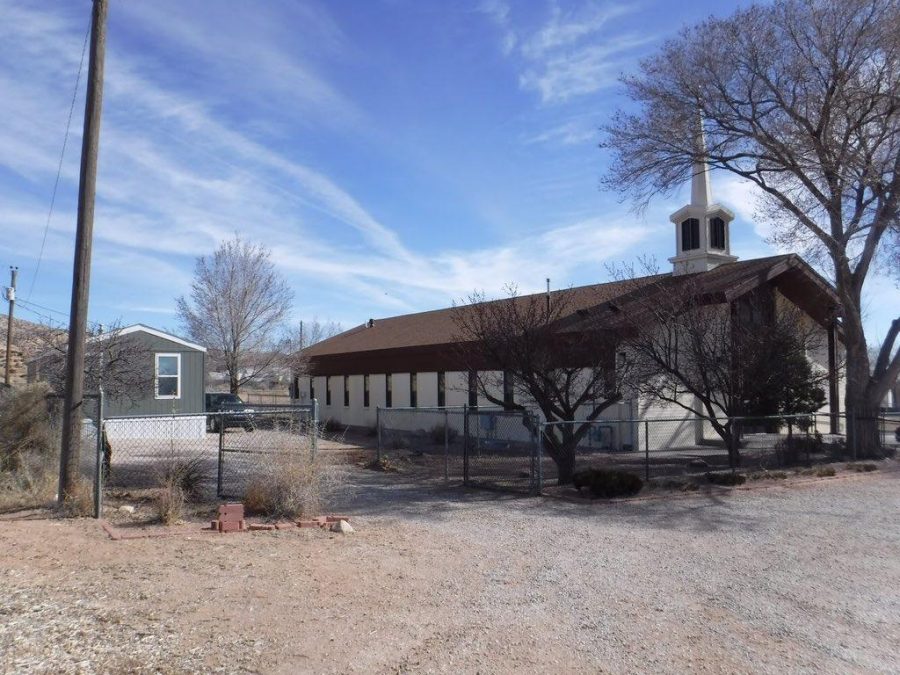The history between the Church of Jesus Christ of Latter-day Saints and Native Americans has spanned almost two centuries. This is a two-part series to analyze this area in LDS studies which remains fast-growing and controversial. With the expertise of a University of Utah professor and insight from a student, we’re embarking on this relationship’s brief history.
The Origins of Lamanite
In the Book of Mormon, there are many well-known groups in the early world before modern history, where its two most well-known societies are the Nephites and the Lamanites. The name Lamanite derives from a man named Laman, who is the son of a prophet, Lehi, and brother of another prophet, Nephi.
When the Lord placed his authority into Nephi’s hands, Laman revolted and attempted to murder his brother Nephi in an act of antagonism towards the teachings of God. Witnessing this, the Lord punished Laman and his followers by banishing his presence and to “cause a skin of blackness,” cementing this group as the Lamanites.
There have been interpretations of the Book of Mormon’s critical line in 2 Nephi 5:21, where some scholars claim the darkening of the skin is metaphorical, while others believe that the reference to darkness is relative throughout scriptural history or agree that it is straightforward in reflecting racism. Since then, the passage and similar references have been changed.
Regardless, Lamanites have long been associated with Native Americans and were referred to as such for many eras until recently.
The Church’s Beginning Relationship with Tribes in the 19th century
Marcie Goodman is an assistant professor in the sociology department. Through the small Latter-day Saint Studies Initiative at the Tanner Humanities Center, she has taught a class focusing on employing rigorous sociological examinations of life in the Church titled “Latter-day Saints Society & Culture.”
Throughout LDS history, Goodman said the term “Lamanite” was tethered to indigenous communities across North and Central America.
The views that members of the LDS Church had towards Native Americans can be described as a “paternal type of influence,” Goodman said. This can also allude to a popular satirical cartoon by Thomas Nast, titled “The Great White Father.” The image is of President Andrew Jackson holding petite figures of Native Americans while seated. Nast intended to reveal the exercise of paternalism onto tribes as enacting policies for their welfare — critics found it delimited their autonomy.
Goodman says this attitude was salient in the LDS Church’s views towards Native American peoples and helped contribute to essentialism as inherently needing help. “They knew better what was best for Native Americans,” Goodman said. “I don’t think you nearly see that as much today in the Church of Jesus Christ.”
Goodman explains one of the earliest Latter-day Saint missions conducted featured missionaries traveling to the Midwest in 1830 and engaging with many indigenous tribes in hopes of conversion.
“The Church of Jesus Christ of Latter-day Saints has a very long history with Native Americans that’s tied specifically into their beliefs about the Book of Mormon,” Goodman said.
When the settlers arrived in Utah, there were abundant attempts to proselytize the Native Americans in the region. One successful example for the LDS Church was Washakie Farm in Northern Utah. The project of Washakie Farm was a contract between LDS figures and the Northwestern Band of Shoshone tribe.
An agreement was reached in 1880 where members of the tribe could grow crops on the settlers’ land and live on it if a heavy LDS Church presence resided alongside it.
Spanning decades until the mid-19th century, the Northwestern Shoshone population dwindled until the farm was deemed obsolete enough to prepare its sale in 1972. The town was burned down and the remaining locals were displaced. This was the end of the formal relationship between the tribe and the LDS Church.
LDS Contemporary Doctrine in the 20th Century
The vagaries embedded in the LDS Church’s view on the theory of race was notable in its various church programs. One is famously known as the Indian Placement Program (IPP), where white church members were encouraged to foster and baptize Native American children while attending public education in lieu of boarding schools on reservations.
This lasted for many decades since the 1950s and was visibly widespread under President Spencer W. Kimball’s time during the 1980s until it folded a decade later. The program has been influential and emotionally contentious. Academic literature, creative works and personal accounts expressed resentment toward the Church’s past actions. Notable lawsuits in recent years have been filed alleging sexual abuse during the children’s time in the IPP.
President Kimball was also a prominent symbol of Native American and Church relations in the 1970s and 1980s. Efforts to empower active or possible members sparked a BYU-sponsored musical group called The Lamanite Generation, and a Lamanite Youth Conference appeared during this decade. At this conference in 1971, Kimball was a speaker, where he thanked a Navajo Chairman for identifying as a Lamanite.
“It pleased me to hear Mr. MacDonald say that he was a ‘Lamanite,’” Kimball said. “We knew it all the time, but we didn’t know that he did.”
A Member Looks Back
Lori Begay is a junior studying international relations. Begay is from Blanding, a town in Utah near the Four Corners area. Part of the Near Water clan, she’s enrolled in the Navajo Nation tribe.
Like many other rural areas in Utah, many Blanding residents identify as being a member of the Church of Jesus Christ of Latter-day Saints or grew up in the religion, including Begay.
“Growing up in the church was good,” Begay said. “It was challenging at times. Overall it was a good experience. I still retain the morals and values.”
She credits popular LDS church teachings such as the Word of Wisdom, modesty, tithing and a strong church community to becoming the person she is now.
Regarding the IPP, she empathizes with the native children who left the program with profound trauma and devastation over the loss of their culture. On the other hand, Begay thinks “there were definitely some aspects where the person going into the Placement Program definitely had a more positive impact.”
Begay said her foster grandfather went through the Placement Program and seemed to have more opportunities than those who didn’t participate. He ultimately attended BYU and received a degree. Retaining his culture probably wasn’t a priority for her grandfather during the program, Begay feels.
About a year ago, Begay became an inactive member.
“Just because I was raised in the church doesn’t mean I’m converted,” Begay said. “Does going to church every Sunday really help instill that relationship or connection with Heavenly Father?”
For her own current grappling with the LDS faith, Begay doesn’t consider too much of the Church’s history with Native Americans. Her current priority is figuring out how the teachings in the church help her.
The Church describing Native Americans as Lamanites have been consciously phased out of its lexicon and the focus of conversion via policies.
For now, Begay just wants to talk. The Church is familiar with that.
Next week, we’ll focus on learning more about the cultural campaigns and policies the LDS church created for current or prospective Native American members. This article is part of the Poynter College Media Project. Click here for more stories and information on the topic “Are U Mormon?”




Carol Kendall • Feb 15, 2019 at 9:12 pm
Check out the book Making Lamanites by Matthew Garrett, PhD:
https://uofupress.lib.utah.edu/making-lamanites/